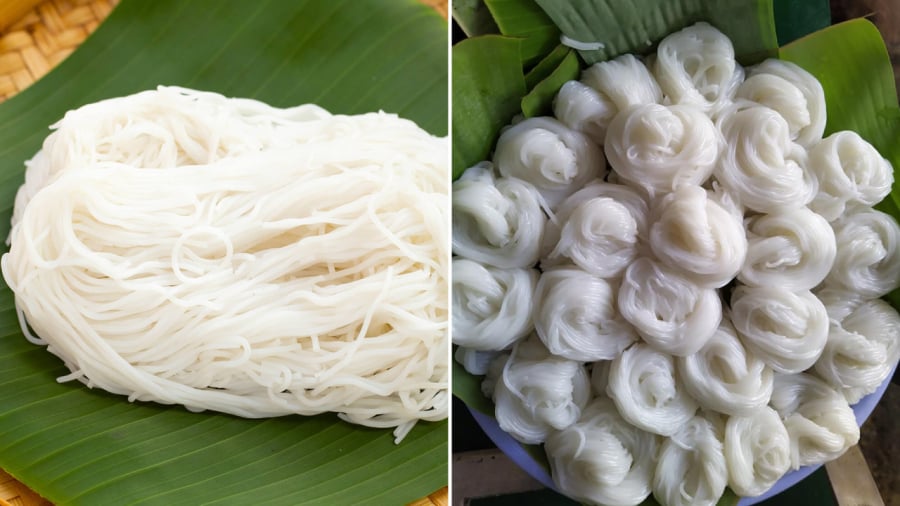Vermicelli is a beloved dish for many, especially during the summer. The soft and delicate noodles provide a refreshing dining experience. Vermicelli is made from rice flour and formed into round strands, boiled in hot water. In the traditional method of making vermicelli, rice is soaked for 48-72 hours. This soaked rice is then ground and filtered to separate the water. The resulting dough is placed in a mold, above a pot of hot water. The dough is poured into the mold, which has small perforations. The vermicelli strands take shape and fall into the hot water, cooking instantly. The cooked vermicelli is then scooped out and drained, ready to be enjoyed. The thickness of the strands varies depending on the type of vermicelli. Additionally, the noodles can be left untangled or pressed into flat sheets or thinner strands.
Vermicelli is versatile and can be used in a variety of dishes. It is commonly used in soups such as vermicelli soup with crab, fish, snail, pork ribs, or in a dish called “bún thang.” It is also delicious in dry dishes like mixed vermicelli, vermicelli with fermented shrimp paste and fried tofu, or spring rolls.
The process of making vermicelli is intricate and time-consuming. The noodles have a naturally sour smell and are prone to disintegration and spoilage. While modern production methods have introduced machinery to simplify the process and reduce the labor intensity, some manufacturers still add prohibited substances to prolong shelf life, enhance whiteness, and improve texture. These substances include toxic chemicals such as tinopal (a fluorescent agent), borax, preservatives, and whitening agents. Although these chemicals leave no distinct taste, they cause the noodles to shine brightly under sunlight. According to VnExpress, Associate Professor and Doctor Nguyen Duy Thinh, a former faculty member at the Institute of Biotechnology and Food Technology, Hanoi University of Technology, revealed that tested samples of vermicelli contained tinopal and borax.
Tinopal makes the noodles clearer and shinier, while borax, a sodium salt of boric acid, gives the noodles a crisp and chewy texture. Additionally, borax helps preserve food, preventing it from spoiling over time. These chemicals are banned from food processing due to their harmful effects on health. They can cause long-term damage to the liver and kidneys and even lead to cognitive decline. Despite the risks, some manufacturers continue to use these additives for the sake of profit.

Consuming vermicelli containing these chemicals can lead to digestive issues such as stomach aches, diarrhea, and even food poisoning. Depending on the amount of chemicals present, it can cause acute or chronic poisoning. These toxic substances also pose a risk of damaging the digestive tract and causing inflammation of the intestines and stomach. Long-term consumption of food containing these harmful substances can lead to liver and kidney damage and increase the risk of cancer.
According to VnExpress, Associate Professor Tran Hong Con, from the Faculty of Chemistry, University of Natural Sciences, Hanoi, stated that it is challenging to detect the presence of chemicals in vermicelli by sight or taste. The most accurate way to determine this is through laboratory testing. However, consumers can visually inspect the color of the noodles to reduce the risk of purchasing potentially harmful products.
Since vermicelli is made from rice, its color should not be whiter than rice. Natural vermicelli has an off-white color similar to cooked rice. If the noodles appear unnaturally white, shiny, and elastic, they may contain additives. Vermicelli made without additives tends to feel stickier. Additionally, vermicelli made purely from natural rice, without any additives, tends to sour quickly. To extend its shelf life, it must be stored in a cool, well-ventilated area.






























